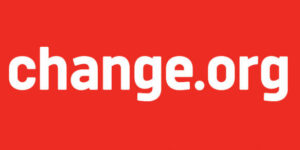7 Ways Candidates Blow A Phone Interview
I’m consistently amazed by how unaware the average job seeker is of how to establish a positive first impression on a phone interview. I hear
I’m consistently amazed by how unaware the average job seeker is of how to establish a positive first impression on a phone interview. I hear
When Larry Nash looks into his crystal ball about the future of the workplace, one thing is clear to him: workplace transparency itself. Larry, Americas Director
Although unemployment in the U.S. has been steadily decreasing, taking a closer look at the numbers uncovers a scary gap: of the 9.5 million unemployed,
Attitude over aptitude is the rallying cry for many in modern recruitment. All our fancy personality tests and scouring of resumes has given us a
The TalentCulture #TChat Show is back live on Wednesday, August 27, 2014, from 7-8 pm ET (4-5 pm PT). The #TChat radio portion runs the
The TalentCulture #TChat Show is back live on Wednesday, August 20, 2014, from 7-8 pm ET (4-5 pm PT). The #TChat radio portion runs the
The TalentCulture #TChat Show is back live on Wednesday, August 13, 2014, from 7-8 pm ET (4-5 pm PT). The #TChat radio portion runs the first
The TalentCulture #TChat Show is back live on Wednesday, July 30, 2014, from 7-8 pm ET (4-5 pm PT). The #TChat radio portion runs the
The TalentCulture #TChat Show is back live on Wednesday, July 30, 2014, from 7-8 pm ET (4-5 pm PT). The #TChat radio portion runs the
The TalentCulture #TChat Show is back live on Wednesday, July 23, 2014, from 7-8 pm ET (4-5 pm PT). The #TChat radio portion runs the
The TalentCulture #TChat Show is back live on Wednesday, July 16, 2014, from 7:00-8:00 pm ET (the radio show followed by the Twitter chat). Last
The TalentCulture #TChat Show is back live on Wednesday, July 9, 2014, from 7pm – 8pm ET. Join us for our first 60 minute show as we
The CEO of Great Rated! talks about the central role of employee surveys in employer brands, how Great Rated! works, and about the growing importance
Recruitment is a constant battle for HR. It’s a persistently nagging requirement, it never goes away. Just as soon as you think you’ve got enough
The TalentCulture #TChat Show is back live on Wednesday, June 25, 2014, from 7pm – 8pm ET for a special Twitter chat. Meghan and Kevin will be

The TalentCulture #TChat Show is back live on Wednesday, June 18, 2014. #TChat Radio starts at 6:30 pm ET (3:30 pm PT) and the convo continues on #TChat Twitter chat from

Bersin by Deloitte recently released their 2014 Corporate Learning Factbook, and revealed that corporate training is in huge demand right now, and it is only

Leaders everywhere are jumping on board with the employee engagement movement. They have different tactics, go-to blogs and conferences to help them with this mission

Written By: Tracey Arnish, Senior Vice President, Talent at SAP The economy is improving, and changes in social norms have raised the stakes in recruitment.

The TalentCulture #TChat Show is back live on Wednesday, June 11, 2014. #TChat Radio starts at 6:30 pm ET (3:30 pm PT) and the convo continues on #TChat Twitter chat from

Congratulations! You’ve already rounded a few hurdles of starting a business — you’ve made the decision it’s something you’re motivated to do and you’ve set

What methods make sense in evaluating potential hires? The #TChat crowd shares wisdom from experience

How can employers move the meter on their job candidate experience? Experts share survey results with the #TChat crowd

There’s something fundamentally broken with the way employers treat potential employees. Change is long overdue. Let’s fix this…

We know that mobile tools are rapidly transforming recruitment. But what about the rest of the hiring process? #TChat talks about why employers need to get ahead of the curve